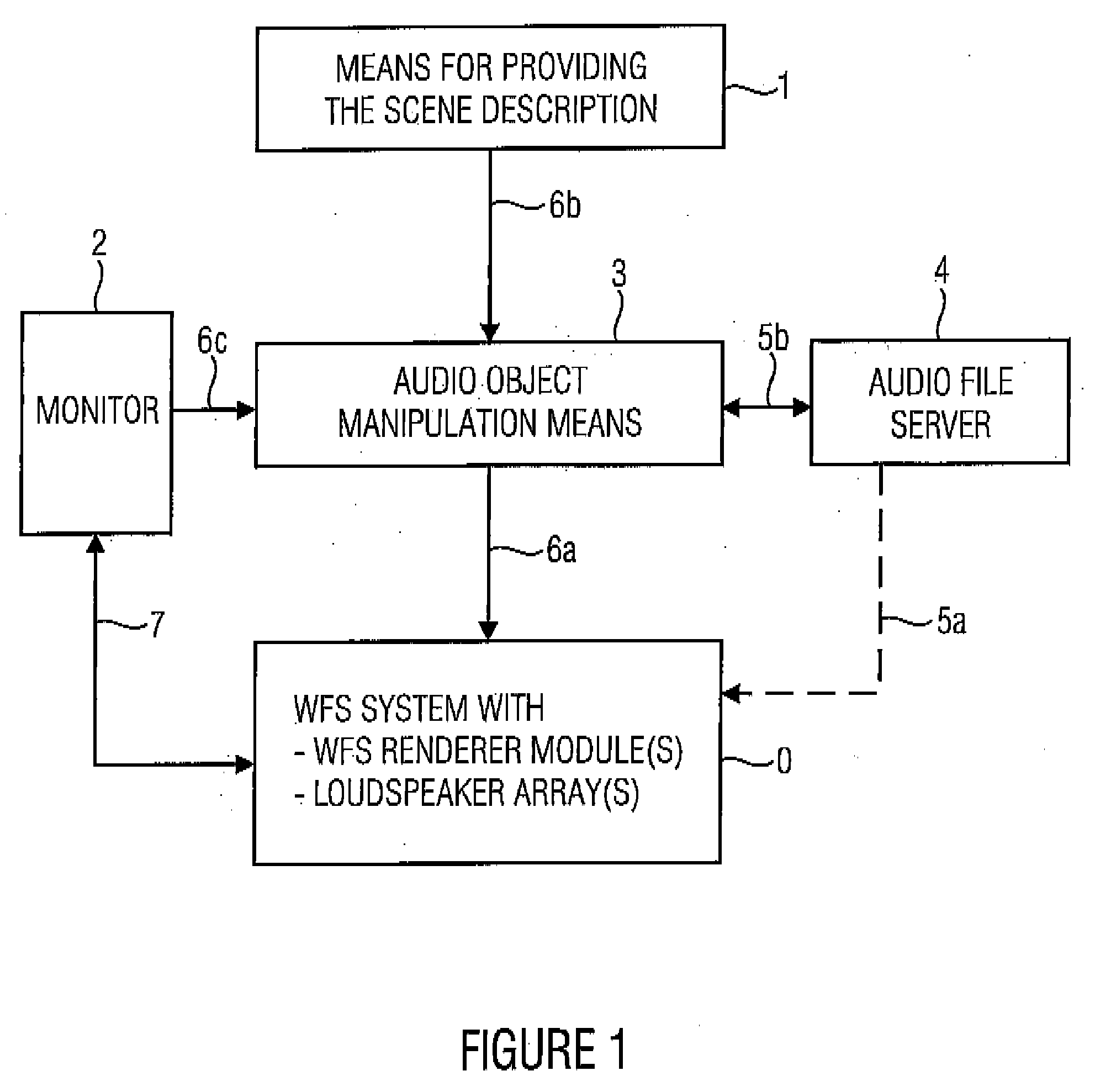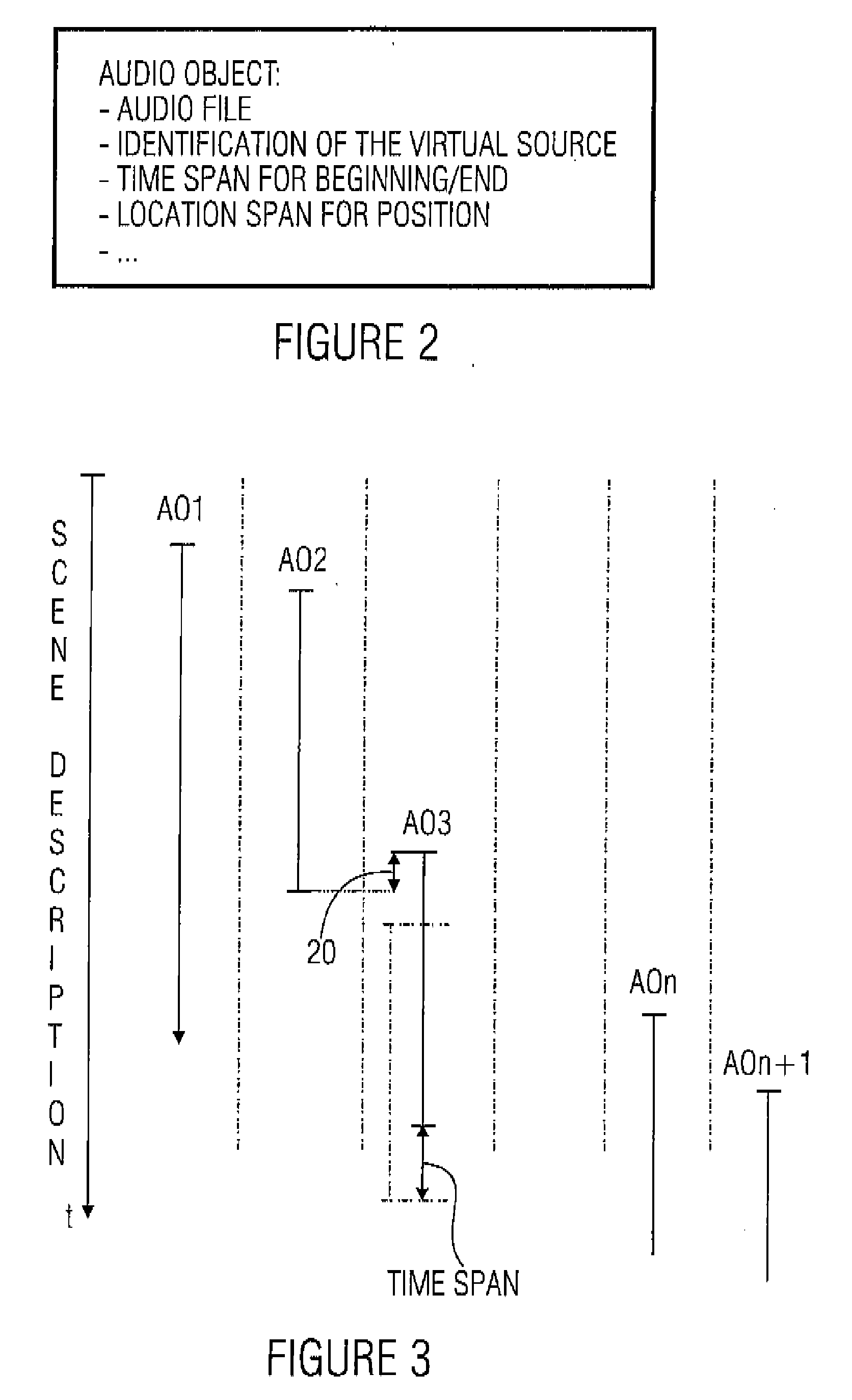Apparatus and method for controlling a wave field synthesis rendering means
a wave field synthesis and rendering means technology, applied in the field can solve the problems of wave field synthesis only rarely being used in practice, the quality of spatial sound reproduction of natural, but also of virtual environments, and the quality of audio quality suffers significantly, so as to reduce the amount of overload situations, reduce the effect of overload situations, and expand the effect of actual capacity limits
- Summary
- Abstract
- Description
- Claims
- Application Information
AI Technical Summary
Benefits of technology
Problems solved by technology
Method used
Image
Examples
Embodiment Construction
[0058]FIG. 1 shows an inventive apparatus for controlling a wave field synthesis rendering means arranged in a wave field synthesis system 0, wherein the wave field synthesis rendering means is formed to generate synthesis signals for a plurality of loudspeakers within a loudspeaker array from audio objects. In particular, an audio object includes an audio file for a virtual source, as well as at least one source position at which the virtual source is to be arranged inside or outside the reproduction room, i.e. with respect to the listener.
[0059] The inventive apparatus shown in FIG. 1 includes a means 1 for providing a scene description, wherein the scene description fixes a temporal sequence of audio data, wherein an audio object for a virtual source associated with the audio object defines a temporal start or a temporal end, wherein the audio object for the virtual source comprises a time span in which the start or the end of the audio object must lie. Alternatively or addition...
PUM
 Login to View More
Login to View More Abstract
Description
Claims
Application Information
 Login to View More
Login to View More - R&D
- Intellectual Property
- Life Sciences
- Materials
- Tech Scout
- Unparalleled Data Quality
- Higher Quality Content
- 60% Fewer Hallucinations
Browse by: Latest US Patents, China's latest patents, Technical Efficacy Thesaurus, Application Domain, Technology Topic, Popular Technical Reports.
© 2025 PatSnap. All rights reserved.Legal|Privacy policy|Modern Slavery Act Transparency Statement|Sitemap|About US| Contact US: help@patsnap.com



